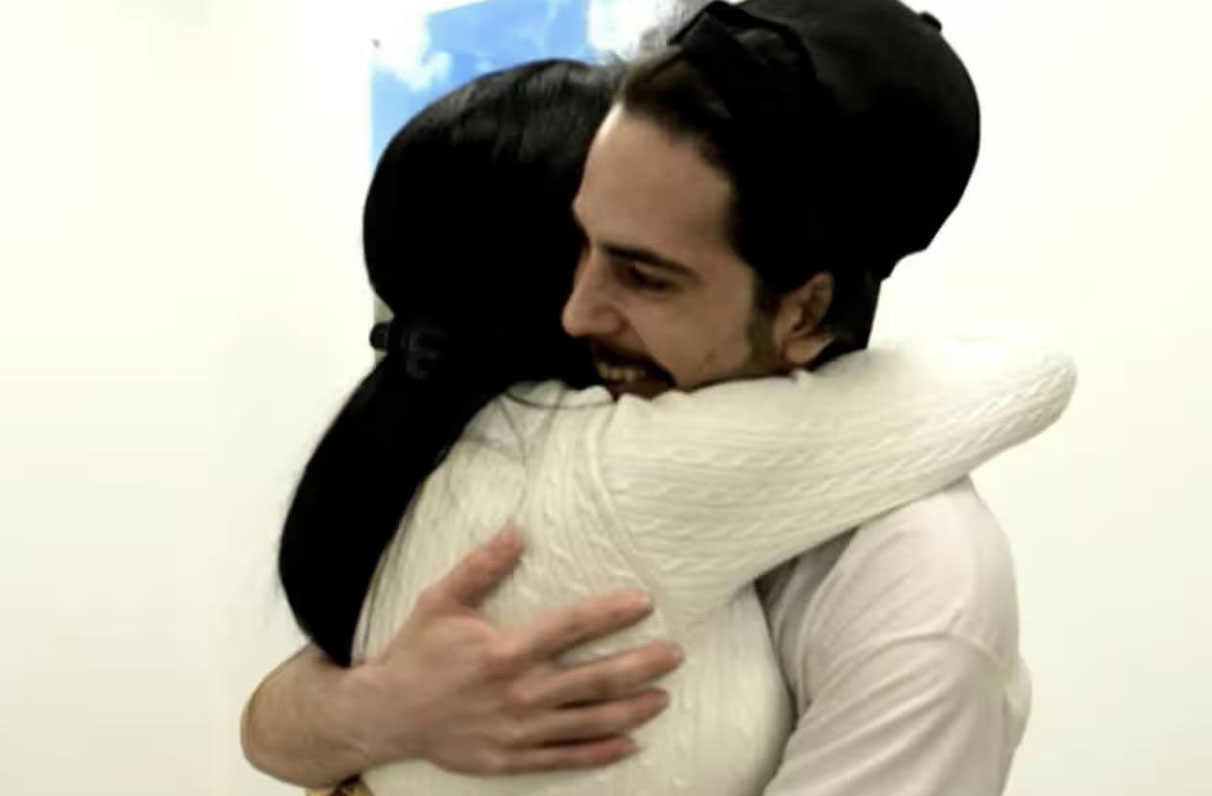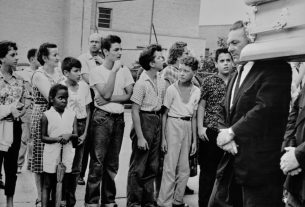This week, the world watched as Einav Zangauker cradled her son, Matan, returning from captivity in Gaza, her arms locked around his neck. His face sank into her shoulder.
In the seconds before their embrace, Einav could be seen stomping her feet as she ran toward her son, a movement like the jumping we’ve seen from other families spotting loved ones return. It was her nervous system’s way of discharging two years of stored fear, releasing the survival energy no longer needed once safety was near.
Again and again, in reunion videos of hostages returning home, the same gesture appears: the neck-to-neck embrace. It is not accidental. The area is dense with vagal fibers and baroreceptors, tiny sensors that can slow the heart and tell the body, you are safe now.
As Einav reached her son, she wrapped her arms tightly around him and slipped off his backpack, seeking full contact. She may not have known why she was holding him that way, but her body did. By drawing him close, her neck against his, she was guiding his nervous system to down-regulate, signaling safety and connection, inviting his body to attune to her steadier rhythm. Researchers call this co-regulation, one nervous system lending stability to another until both can rest.
“My life, you are my life,” she said, pressing her heart against his as their two nervous systems began to synchronize through rhythm and touch, the body’s language of safety.
Among those now beginning this long recovery are brothers Daniel and Neria Sharabi, whose closest friend, Yosef Chaim Ohana, was held hostage in Gaza’s tunnels and released this week. For two years, they lived in two different nervous systems of war: the brothers above ground, their friend trapped beneath it. Their story is featured in an upcoming film, “A Hero’s Burden,” directed by Sepi Makabi k, which traces the anguish of survival and the pull of loyalty to those left behind. In their reunion, as in so many others, something primal happened when safety finally returned.
Then, in the video of their meeting, Yosef runs straight to Daniel, colliding with him in a powerful embrace, neck pressed to neck, a mammalian response that wordlessly signals safety after separation. As they hold each other, Daniel’s legs suddenly give way. Later, he told the filmmaker he had fainted, a dorsal vagal response to sudden safety. After two years of vigilance, his body did what his mind could not. It let go, but too fast.Yosef then pulls in Daniel’s brother Neria and their friend Neta Abir Lev, instinctively lowering his head to be cradled between their necks.
The movement was not deliberate but deeply encoded, a reflex of mammals seeking safety through contact. In that moment, though they may not have known it, their bodies engaged in a neurophysiological recalibration from survival to connection. This, too, is co-regulation, their nervous systems aligning in a synchrony of heartbeat, touch, breath and voice that tells the body the danger has passed. It is safe now.
Unsurprisingly, after safety had unfolded through their bodies, there was room for words. In a phone call the next day, Daniel told me, “We apologized to him for coming back and he didn’t. He got upset that we said sorry and was just happy to hear we were alive.” Once their nervous systems had settled into safety, they could speak their vulnerabilities aloud. It’s a crucial part of recovery.
I am a specialist in trauma who has spent decades studying how the nervous system responds to threat and recovery. After October 7, I founded the Israel Healing Initiative to combine neuroscience and psychology for those most affected by terror. When I first met Daniel, he could barely sit through an intake session.
We began with gentle neurostimulation, including vagus nerve stimulation, to help calm the circuits that had been locked in hyperarousal. Within minutes, he could sit long enough to complete the intake and begin therapy. Over time, those same pathways that had kept him on alert began to soften, the circuits of safety slowly reawakening. The goal is not to replace human connection but to support the body’s natural route back to it.
When I look at the Zangauker mother and son, or Ohana and his friends, I see more than comfort. I see biology and love intertwined, one nervous system retraining another to remember what safety feels like. With today’s understanding of neuroscience, we can help that process move faster and with greater precision. Recovery begins with human connection, and with a little help from science, it becomes something the body can finally sustain.
Dr. Orli Peter is a clinical psychologist and founder of the Israel Healing Initiative, a nonprofit established after the Oct. 7 attacks to advance trauma recovery and healing based on neuroscience. She can be reached at [email protected].




